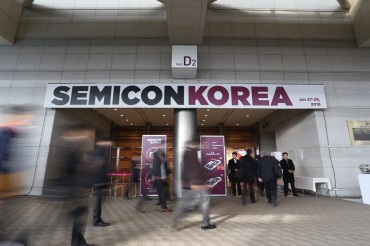BRIDGEWATER, N.J., March 12 (Korea Bizwire) — The United States is a market primed for operator-sponsored, brand- targeted advanced messaging based on Rich Communications Services (RCS), according to focus group conversations conducted by Synchronoss (NASDAQ: SNCR). After bringing together dozens of U.S. consumers of all ages to discuss their mobile messaging habits, Synchronoss is able to show the value of RCS to operators and brands to increase subscriber engagement and create new revenue.
RCS is an easy-to-use, feature-rich, interactive cross-operator advanced messaging platform that will be available on all mobile devices. This evolution of operator-led SMS messaging not only incorporates advanced multimedia capabilities into text messages but also gives users the ability to accomplish everything they currently do across multiple apps from a single messaging platform and with a single contact list for friends, family and services.
RCS also serves as a powerful, private-by-design direct marketing ecosystem that operators can offer to brands. Brands will be able to leverage a new secure, permission-based, personalized communications channel and take advantage of SMS’s higher open, response and click-through rates. At the same time, operators will gain an opportunity to grow their revenue outside of traditional lines of business and further solidify their own reputations as protectors of subscriber privacy.
Synchronoss, a global leader and innovator of cloud, messaging, digital and IoT products and the provider behind the RCS-based +Message service launched by three major Japanese operators in May 2018, asked focus group participants about their current messaging behavior and introduced them to RCS capabilities. The resulting discussions demonstrated a clear demand for operator-sponsored RCS, with convenience and operator trust at the heart of participants’ excitement for this new form of mobile communication.
“When asked about their perception of messaging services today, participants perceive a clear distinction between ‘messaging’ and ‘texting’,” said Glenn Lurie, President and CEO, Synchronoss. “‘Messaging’ is reserved for messaging applications, such as Facebook Messenger, WhatsApp or Instagram, while ‘texting’ is considered to sit outside of this messaging arena and is a different activity entirely. For consumers, texting is foolproof.”
For operators, this is good news. While consumers may use multiple messaging applications for different purposes, nearly everyone texts and they text a lot. Consumers trust traditional texting service because they consider it secure and reliable, and they know their personal contacts all have access to texting – which isn’t necessarily the case with messaging apps. In fact, the most commonly used messaging app is the native, pre-loaded application that integrates both SMS and device-centric messaging services, such as iMessage or Android Messages. This preference for and trust in SMS demonstrates a clear opportunity for operator-sponsored RCS to build on the allegiance consumers already have to text messaging.
RCS capabilities are wide-ranging. They include basic person-to-person chat as well as “mobile-app”-like experiences, such as booking and scheduling services or purchasing goods directly from the RCS application. Focus group members were receptive to the idea of living their digital lives in a single, one-stop messaging application that includes friends, family and favorite brands. They liked the prospect of being able to eliminate multiple apps and streamline their mobile communications into one all-encompassing tool. This removes the user-friction caused by the sometimes clunky and inconvenient separate messaging apps and the tendency of those apps to occupy a lot of device memory.
In addition to gaining a better understanding of consumers’ mobile messaging preferences, the research also produced some key findings for operators.
“Three lessons emerged from our research,” said Lurie. “First, operators must prioritize person-to-person communications to ensure RCS is seen as an app used for day-to-day texting as well as messaging. Second, operators should quickly launch application-to-person functionality to make it easy for consumers to control interactions with the brands they like. And finally, operators must prioritize privacy and security so that RCS becomes the app consumers trust for everything. RCS is an incredible opportunity for operators and brands. Consumers love its capabilities, and brands love its potential as a safe, engaging marketing channel.”
The findings from the focus groups can be found in a whitepaper entitled ‘How operator-sponsored RCS can win consumer hearts and brand budgets’, and can be downloaded here: https://synchronoss.com/operator-sponsored-rcs/
About Synchronoss Technologies, Inc.
Synchronoss (NASDAQ: SNCR) transforms the way companies create new revenue, reduce costs and delight their subscribers with cloud, messaging, digital and IoT products and platforms supporting hundreds of millions of subscribers across the globe. Synchronoss’ secure, scalable and groundbreaking new technologies, trusted partnerships and talented people change the way TMT customers grow their businesses. For more information, visit us at www.synchronoss.com.
Investors:
Joseph Crivelli
Synchronoss
908-566-3131
investor@synchronoss.com
Media Contacts:
Anais Merlin
CCgroup (International)
T: +44 20 3824 9200
E: synchronoss@ccgrouppr.com
Diane Rose
CCgroup (North America)
T: +1 202-350-2469
E: diane@ccgrouppr.com
Source: Synchronoss Technologies, Inc. via GLOBE NEWSWIRE








